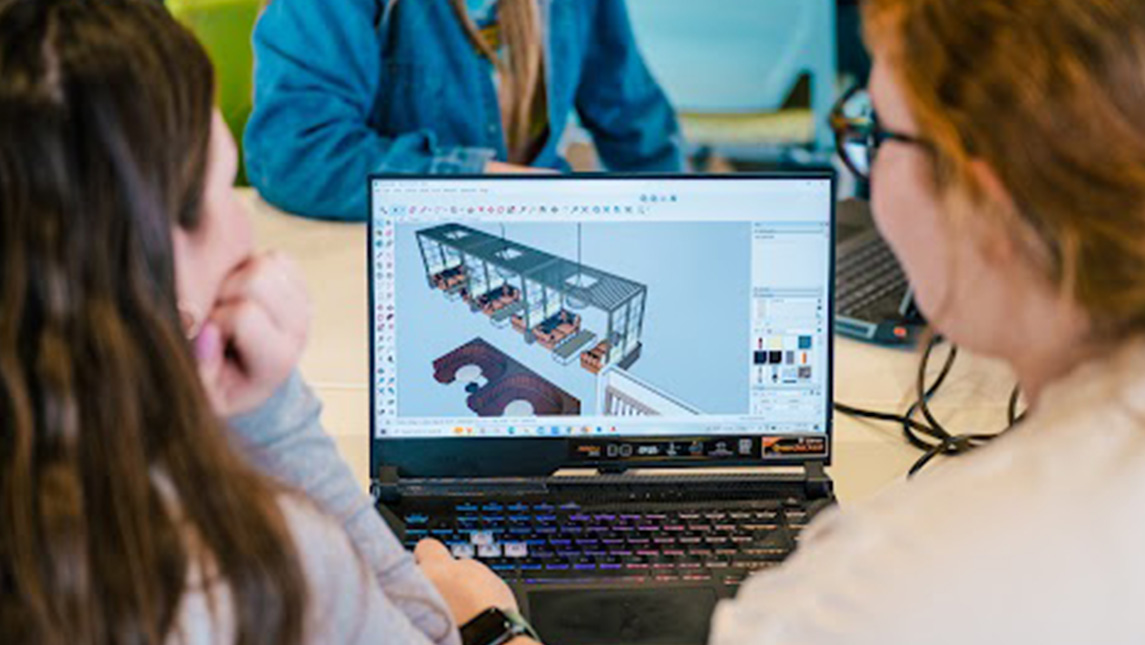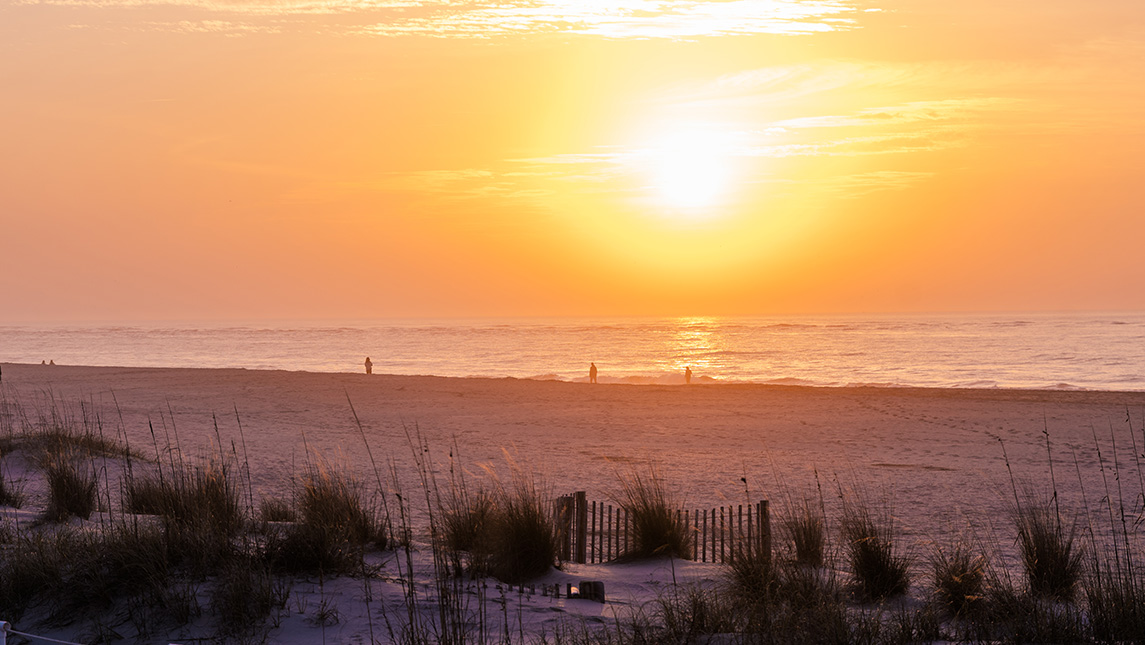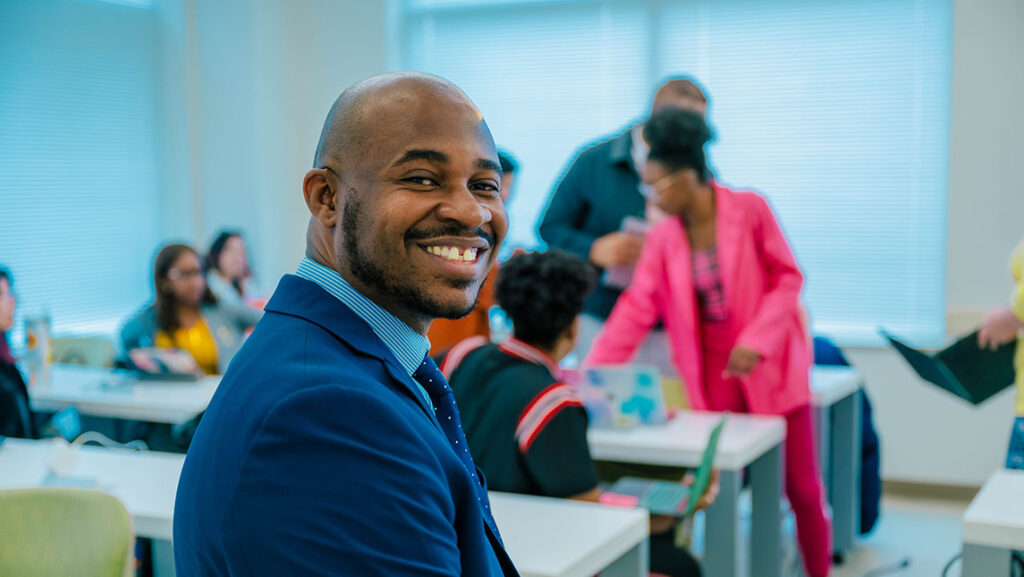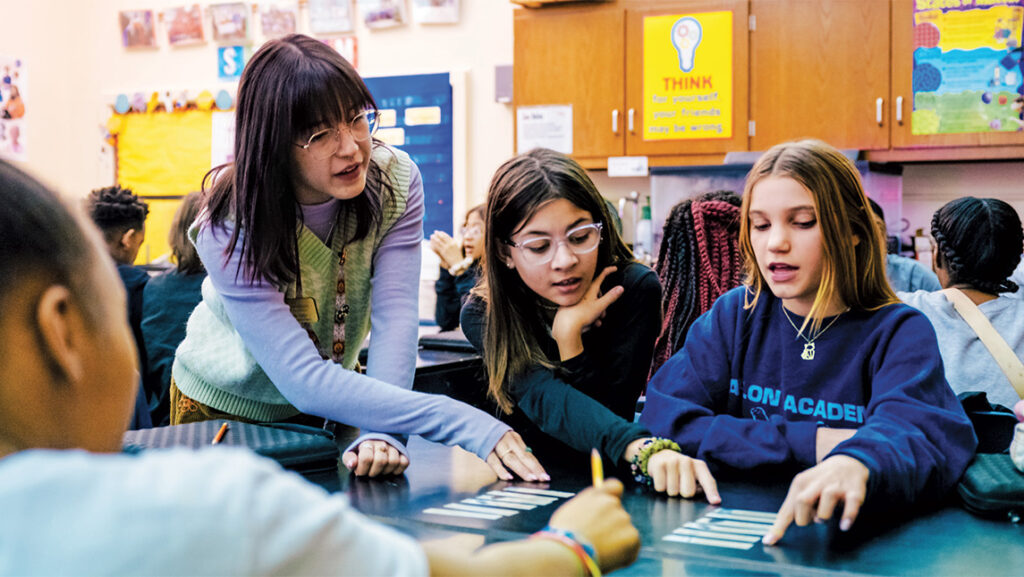“I’m usually the faculty member who has my students out in the community, doing projects that are meaningful to citizens in this area,” Interior Architecture (IARc) professor Travis Hicks admitted. “This group of students is taking me on a journey that I would not normally take.”
The journey was a 3-day trip to Charleston to meet with executives at Wild Dunes Resort. The class would present ideas for redesign of a sports pub at one of the resort’s golf courses; complete site visits for another Wild Dunes restaurant they would redesign this semester; and tour a construction site for a hotel in Charleston’s historic district.
The IARc students were preparing for a 5-hour drive to the beach, but this journey would have far greater impact than a typical getaway.
Business or Pleasure?
The class of 16 designers left winter in Greensboro and arrived in Isle of Palms to breezy, unseasonably warm, salt air. It felt like a vacation. A valet parked the students’ cars as each group walked through the lobby to check in.
Opposite of the check-in area was the Oystercatcher restaurant, which overlooked a massive pool surrounded by comfortable seating groups and anchored by a poolside bar. Palmetto trees were artfully planted along brick pathways.
How could any part of this resort need redesigning? It was upscale yet comfortable, just like members of the Wild Dunes management team had described the brand in virtual meetings the class attended since the semester began.
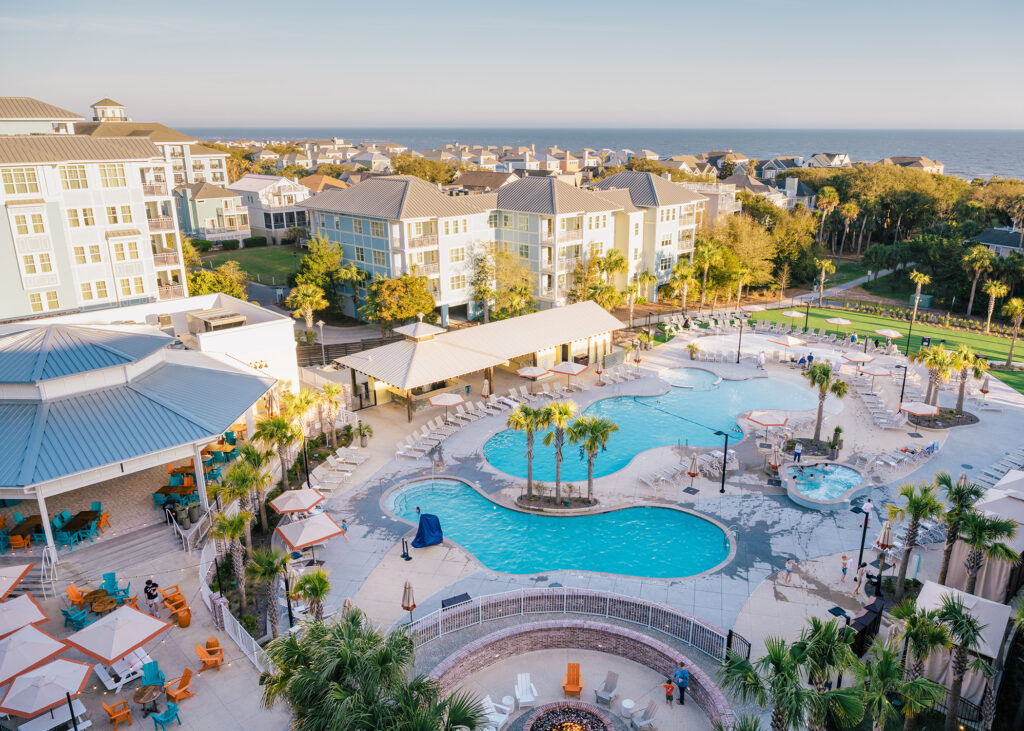
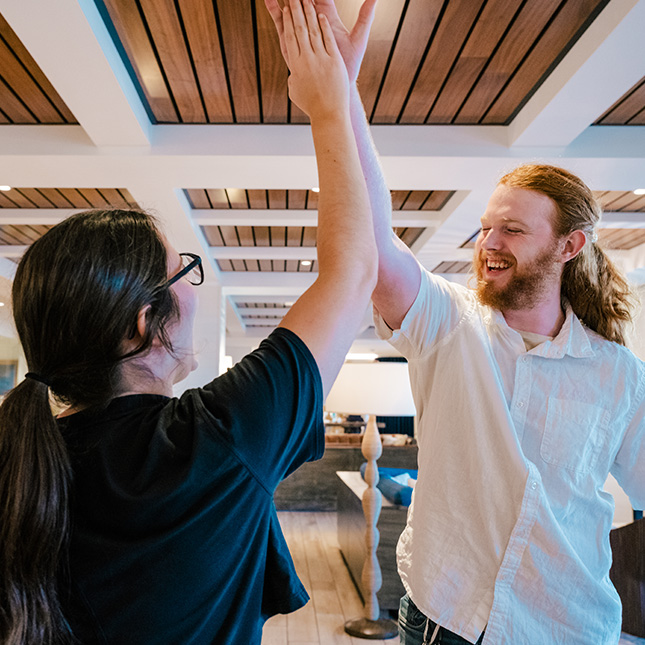
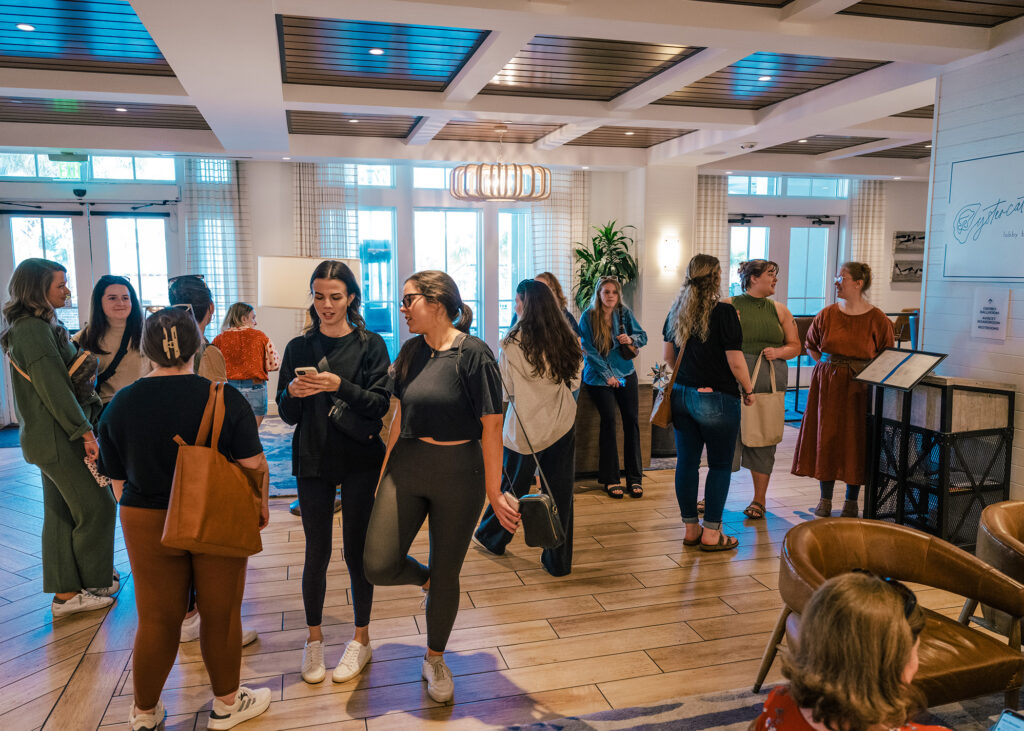
The students took in their surroundings and eyes began to twinkle as they considered their own designs in the spaces of this beautiful hotel. A realization settled among the group: this was a business trip. Expenses were being paid by the client, Wild Dunes Resort, in exchange for the class’ professional design services.
“When we learned that the project was at Wild Dunes, we went crazy. We were all excited to go to Charleston together and stay at a resort on the beach,” senior IARc major Madeline Gilliam explained. “And then learning more about the deliverables of the project, we got even more excited because we’re designers. When we hear about the opportunities we’re going to have, our brains start thinking and our creative juices get flowing.”
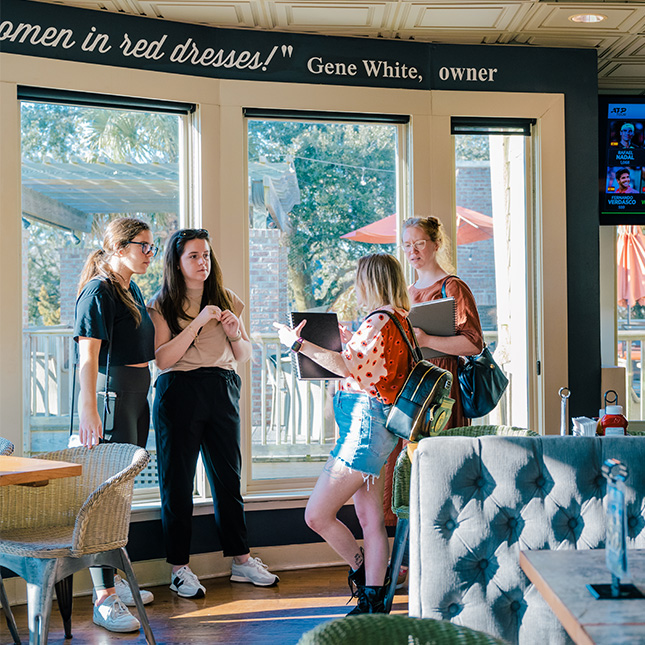
Assignment 1: Huey’s on the Links
The first event on the itinerary was a shuttle ride to one of the resort’s golf courses to see Huey’s, the sports pub and restaurant for which the class had been developing designs over the past month.
“They did a walk-thru video for us, but being here is different,” Gilliam stated. “Huey’s bank of windows has amazing views of the golf course outside, which I hadn’t pictured before. It felt more real, and I could visualize what I designed in the space.”
The students looked around the dated dining room and commented on the impact of seeing it in person. It was evident that each student was confident in the designs they would present the next day. UNC Greensboro’s (UNCG) IARc program had prepared them for this experience, and they were ready to test their skills!
After a stroll back to the hotel veranda where s’more kits were waiting for them around a firepit, the students disappeared for free time and agreed to meet back the next morning for the short drive into Charleston.
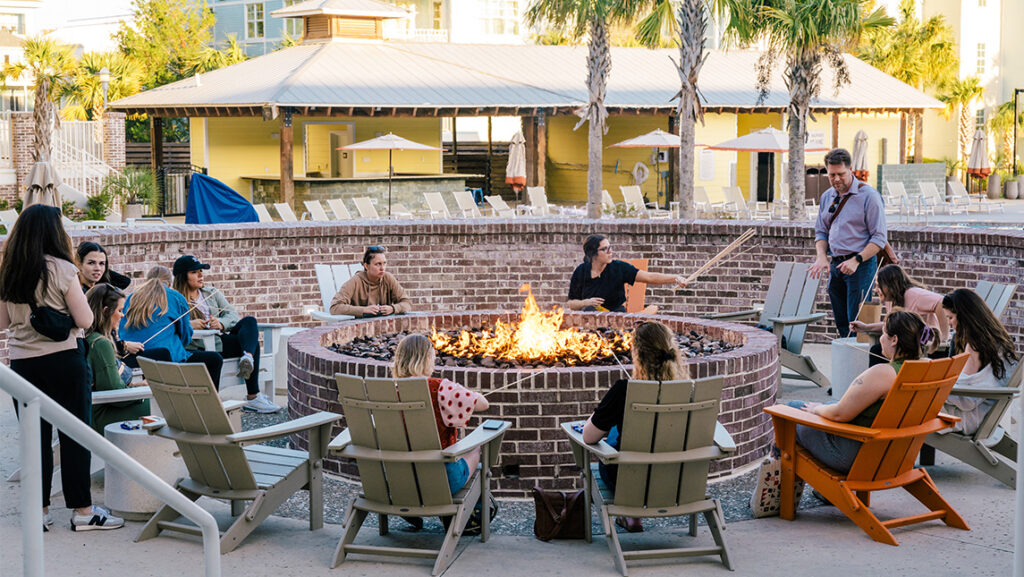
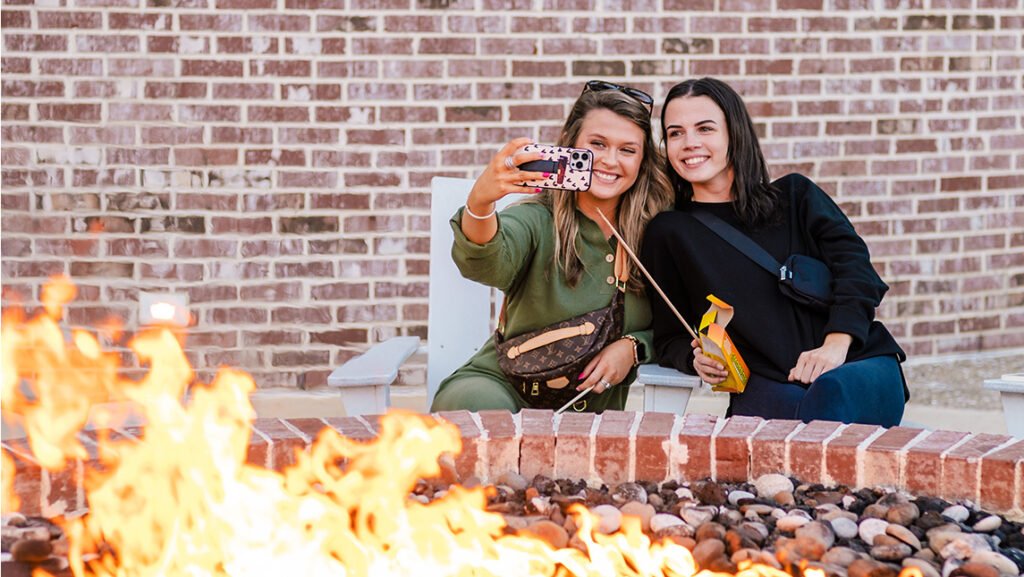
Under Construction
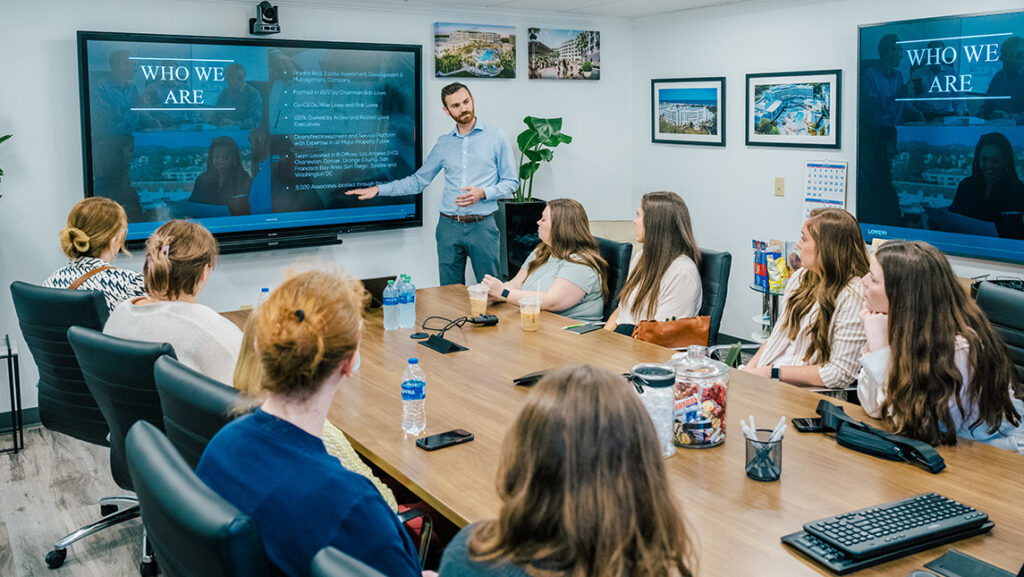
When Hicks contacted UNCG IARc alumna Anna Will Maginn, ‘11, ‘13 for guidance on hospitality design projects for this class, he wasn’t surprised that her position with Wild Dunes’ marketing department would yield some interesting interior design assignments. On day two of the trip, the class learned that Maginn’s connections in Charleston extended beyond the resort.
“UNCG’s interior architecture department does a great job of giving students the tools they need to figure out their own path,” Maginn explained as she reflected on her college experience. “IARc gave us exposure in a ton of areas, so we could walk away with the skills to do a lot of different things in the world of careers.”
Considering those students whose professional interests leaned more toward the architecture and commercial building side of the major, Anna reached out to Lowe, the real estate investment and development firm that built Wild Dunes Resort.
“Lowe is a perfect example of a development group that works on a host of different projects all over the country. If one of these students wanted to go that path, I was excited to give them that insight.”
At Lowe’s regional office in Charleston, the class learned how resorts like Wild Dunes are built, funded and managed. Dan Battista, Executive Vice President, and Sam Parris, Assistant Vice President, then shared plans for their current construction project, the Cooper Hotel.
The Cooper Hotel is a 200+ room, waterfront hotel under construction in Charleston’s historic district. Framing was complete, leaving the six-story building in the perfect state for a hard hat tour. The students spent the morning exploring the skeleton of the hotel and its guest suites, ballrooms, restaurant spaces, and pool deck. It was easy to imagine the fine finishes that would one day frame the Cooper Hotel’s sweeping views of the river and city.
Renee Nubel was inspired by the tour: “I’ve never been on an active construction site, especially for a big commercial project like that. It was really cool to see the process from the concept and design plans they showed us, to the actual building being built.”
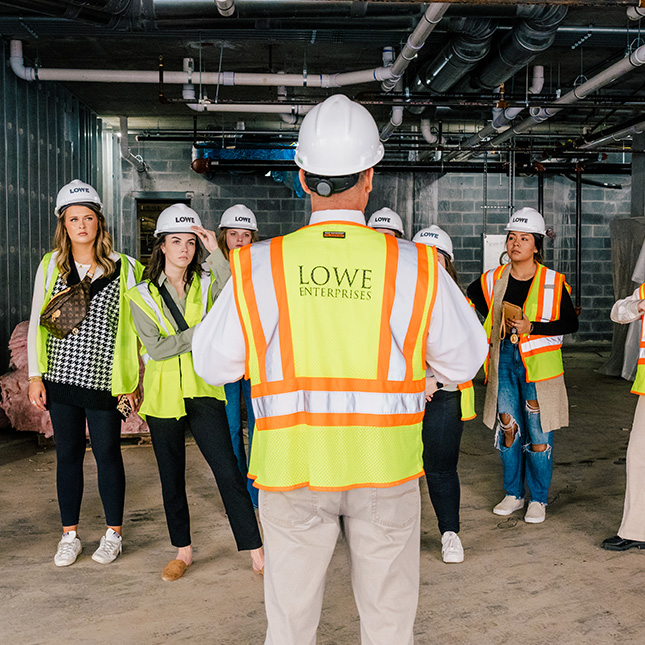
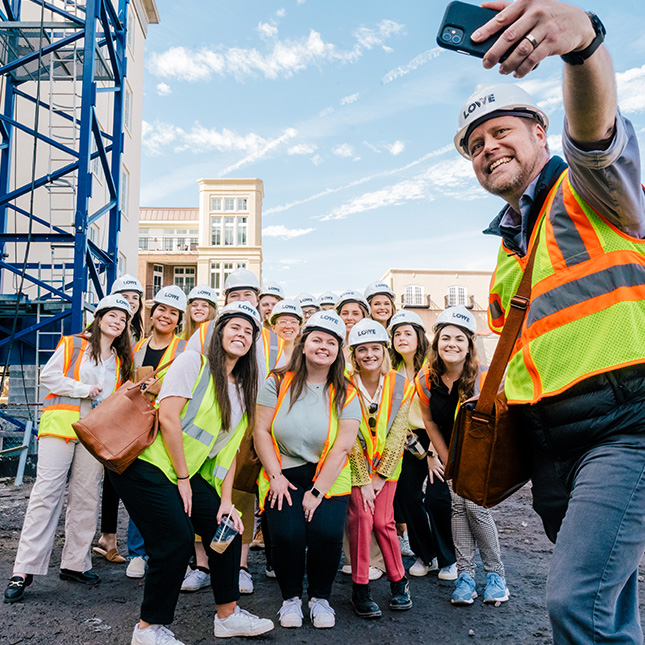
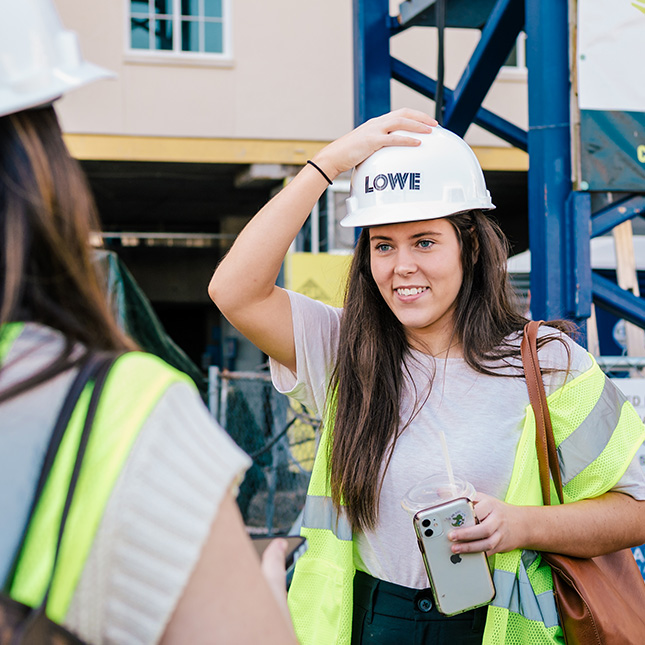
Presenting to the Client
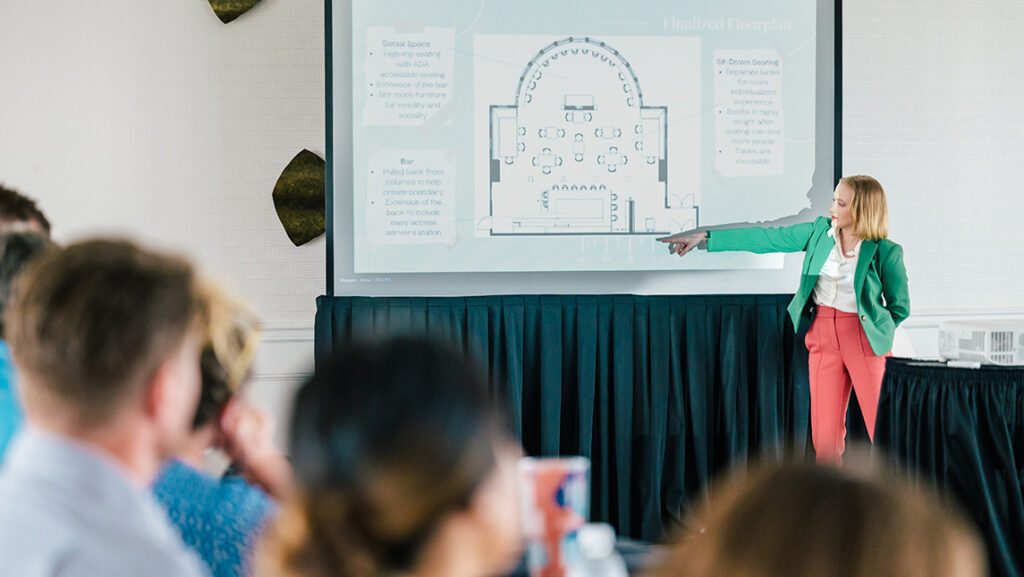
After the hard hat tour in Charleston, the group returned to Wild Dunes in time for their presentations of the Huey’s redesign assignment. Resort executives were gathered in the Indigo Room, a vast, top floor ballroom, to hear 16 student presentations.
“We walked into this big banquet room with the directors of all these different departments. Not what I was expecting!” Gilliam laughed. “But it was great to finally participate in an in-person presentation. Everything else has been virtual.”
The student designs and the young designers’ ability to sell their ideas impressed all in attendance.
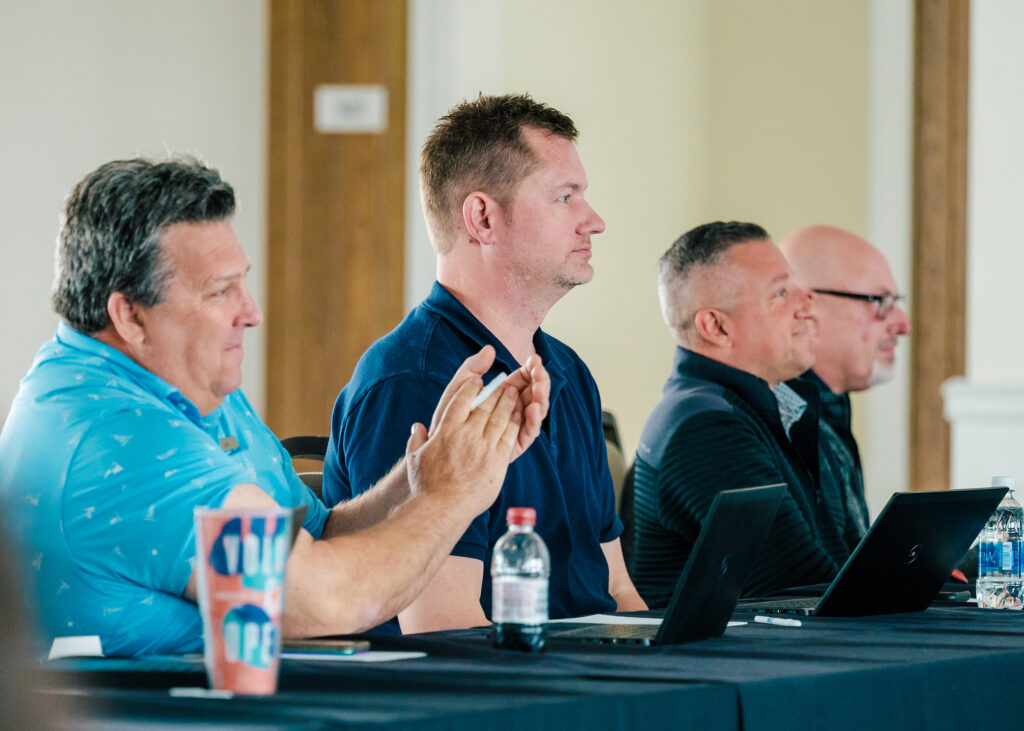
“Our leadership was blown away!” Maginn exclaimed. “Some managers canceled meetings to stay for the entire presentation, because they were so compelling. We are really excited to take the next step and share the students’ designs with our ownership group.”
Hicks was also proud of his class’ work. “It is possible to take any one of the students’ designs and implement them with the right team of people at Wild Dunes.”
As the second day of the trip came to a close, the group basked in the glow of complimentary feedback on their designs. Their first “business trip” was already a great success. The presentations energized them for their next Wild Dunes assignment and the careers that awaited them after graduation.
ASSIGNMENT 2: OYSTERCATCHER RESTAURANT
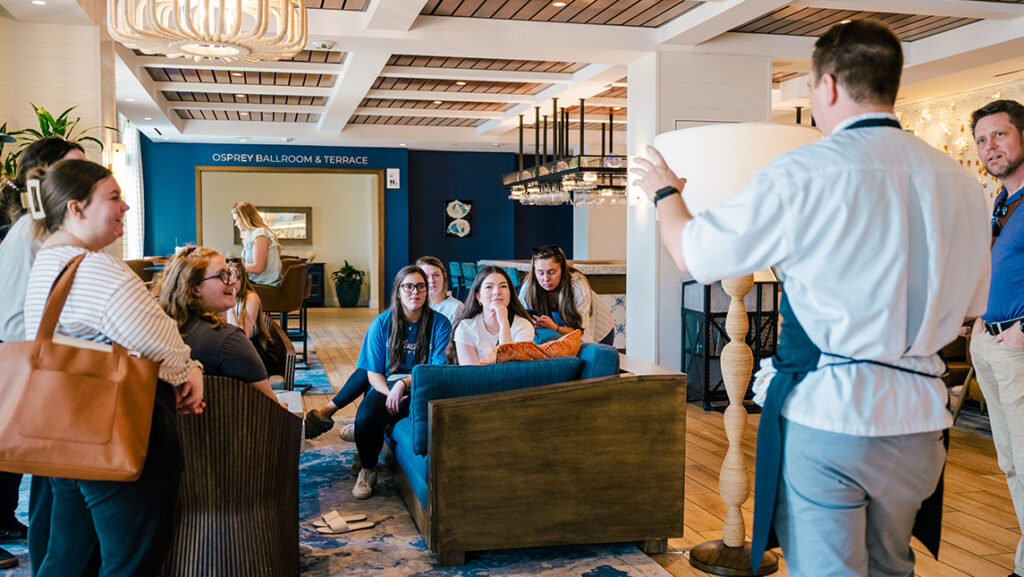
Before departing the resort, the class met back in the lobby of the resort for a briefing on their final project, redesign of the Oystercatcher restaurant. Although the tapas restaurant was beautiful, its chef’s talents are in high demand, so the space must change to accommodate more customers and an expanded menu.
“We’re in a design evaluation mode,” Maginn explained. “The Oystercatcher project is a perfect example. We designed the concept years ago and today, it must change to suit what our audience is looking for.”
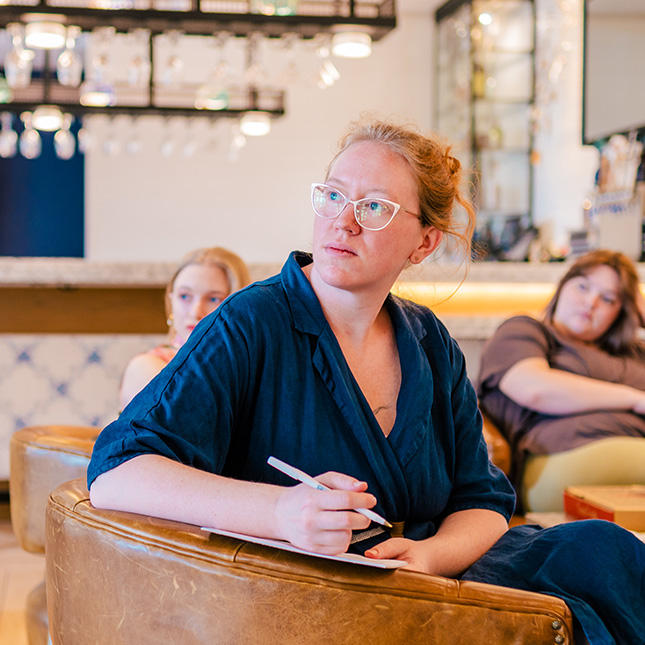
The class was learning that businesses didn’t request fresh designs simply because the current ones were old and outdated. Sales and customer demand would always influence their work.
They took notes and began to ponder how to reconfigure tables and rearrange the space without dismantling the current design elements that were effectively attracting customers. It was a challenge that would keep them busy for the next month as the class prepared to present their ideas via Zoom in April.
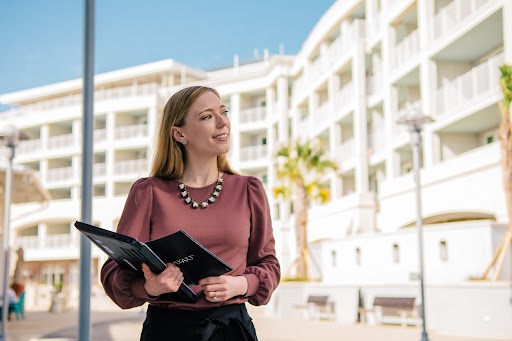
FOOTPRINTS IN THE SAND
As the students prepared to return to UNCG, the impact of the trip and the career-building experience they acquired wasn’t lost on anyone.
“I have never stayed at a resort like this before. This was really cool,” Nubel said. “If I could do this for my entire career – just come to different upscale resorts and redesign their restaurants and hotel lobbies and rooms – I absolutely would, because this is amazing.”
This particular journey had come to a close for the 16 students in Travis Hicks’ studio class. Soon they would graduate and begin their own job searches. Maybe one of them will follow in Anna Maginn’s footsteps.
“I hope they won’t be off and running into the world and forget about us,” Maginn hopes. “If these designs take shape, I would definitely invite the students to be part of the process. If that had happened to me when I was in school, I would be honored beyond words to know that I had a real stamp in a commercial space of this magnitude.
Story by Becky Deakins, University Communications.
Photography by Sean Norona, University Communications.
Video by Grant Evan Gilliard, University Communications.
